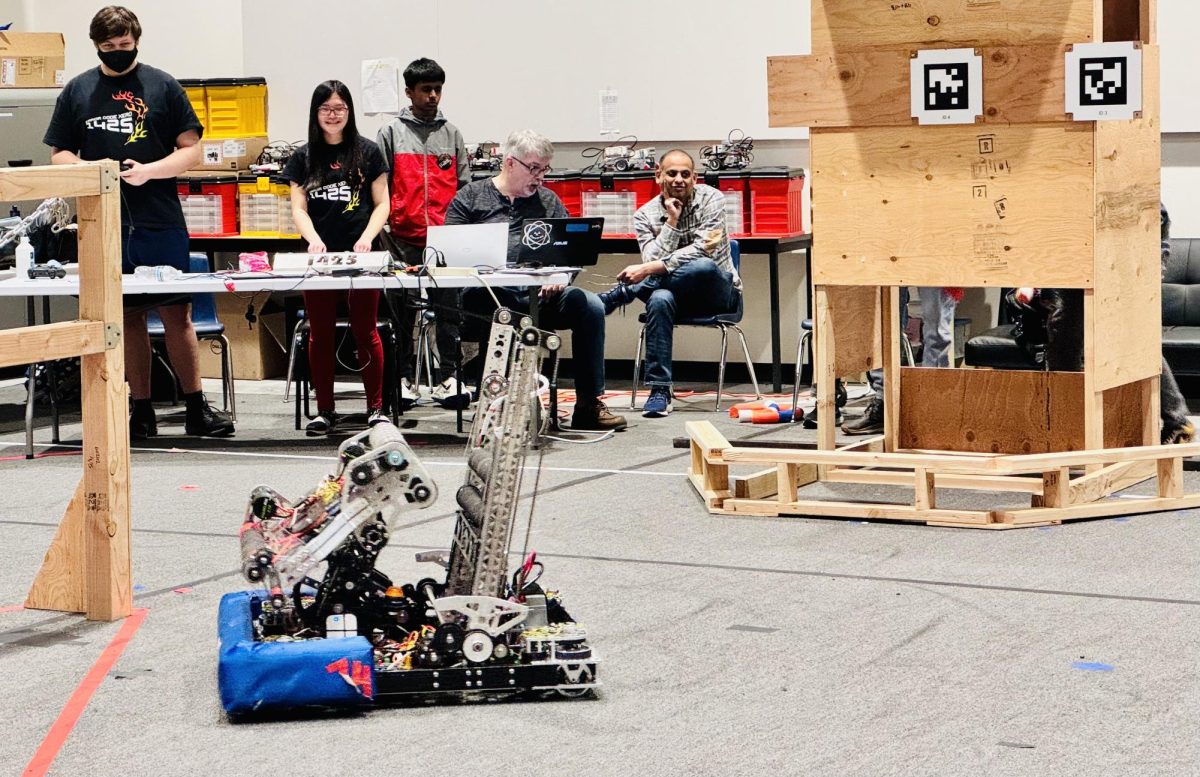Robotics has rapidly grown in popularity among hundreds of high schools nationwide. Students at Wilsonville High School have achieved great success in the program, and express high interest in CREST/STEAM activities.
As an extracurricular, Robotics offers hands-on, entrepreneurial experience for students, engaging interaction between people and networking skills. Robotics highlights a range of abilities; from architecture and planning to coding and conducting, robotics teams can both teach high schoolers technical skills and allow them to experiment with their own creative ideas.
Freshman teammate, Niyati Bhaskar says, “There is an amazing, inclusive, and supportive community. As being a program of STEM, robotics is very encouraging to students both experienced and inexperienced.”
Robotics is open for any student participants, allowing them to join early in their high school careers and also offers the opportunity to upperclassmen.
Another unique factor of Wilsonville’s robotics program is that it is led by many female engineers from the student body. Bhaskar elaborates on this topic by sharing, “I really love how supportive and inspiring the program is to female students, which is not always apparent in many other schools.” But Bhaskar isn’t the only person within the program who shares this viewpoint on the community of collaboration as a part of robotics.
Lily Vu quotes: “The robotics team here at WVHS is like a second family to me. The team is student-led, and almost all of the student leaders are female. The WVHS robotics team strongly supports women in STEM and not only teaches students how to build robots, but also how to grow as individuals.”
As a fun, inclusive program, surely robotics has grown exponentially in the past few years. Wilsonville’s robotics team competes against other schools and even travels throughout Washington and local schools for District “meets.”
Although many students anticipate afternoon robotics meetings, it can also pose a challenge when balancing academics with the commitment to robotics.
When asked how she balances her schedules, Lily Vu replies, “Time is a finite resource, so I plan out my schedule and stick to it. During work time, I put my phone away and avoid procrastination because I have commitments and responsibilities.”
Prioritization seems to be a recurring theme among robotics members. Like any student participating in athletics or extracurricular activities, time management is key. Creating lists, staying organized, and tracking due dates can help prepare students for competitions, meetings, and events.
It can seem tedious to spend weeks manufacturing robots, but there’s a lot of work and thought throughout the process. At the beginning of each season, teams prepare for a 6-8 week stretch of engineer work. Some matches require robots to perform specific tasks or excel in a presented “game,” which requires students to plan how to construct robot abilities accordingly.
Before “build season” begins, team preparation may happen months before the release of upcoming games. Diving deeper into this timely schedule, Vu explains, “In the fall, training across all sub-teams occurs as well as recruiting new members. During this time,” Vu adds, “students may choose a sub-team they would like to work with.”
Lily Vu describes that there are different groups ranging from technical sub-teams, which includes Design, Mechanical, Electrical and Control System teams, and Software jobs, along with non-technical sub-teams, which primarily focuses on Strategy/Scouting and Business. Once students choose to dedicate their time to one team, they will learn skills such as 3D-design, manufacturing with enormous machines, wiring techniques, creating software, strategic analysis, marketing, and media management for the program.
Some robotic competitions limit time and resources during the building process, which requires teams to weigh decisions and use a holistic approach to problem solving.
Sometimes, kickoff events will spring up only days after the new seasonal criteria is released. “This is when we take the entirety of the first day to understand the game manual. Being 153 pages long, participants split into subgroups to analyze and summarize sections into a slideshow,” Vu enlightens.
Here’s where prioritization strikes. Robotics is a game of multitasking. Prototyping typically takes around two weeks, while the actual construing of robots is done in the following six weeks. Test runs are administered by the “drive team” in the final week, detailing perfection in robot performance.
During actual competitions, team coaches will drive team strategy and in Vu’s terms, “Analyze choke points in drive path routines, optimize scoring tactics, and profile the opposing teams.”
Robotics incorporates many entrepreneurial aspects, but also team building exercises, and provides education in learning fundamentals of mechanical engineering, etc.
Niyati Bhaskar reflects on the technical skills she’s acquired through her robotics experience, sharing, “I have learned electrical skills through being on the electrical sub-team, however, my favorite skill I’ve learned is better, more professional communication.”
Vu agrees with Bhaskar’s comments about public speaking, but adds, “I have learned how to lead my peers and stay on track to achieve goals. I’ve learned how to motivate myself and enable others to be successful too. Robotics has helped me grow confident in my leadership and interpersonal skills.”
Guiding the program and supporting students, Danielle Schroeder and Tiffini Stephens have been renowned administrators, pushing students towards greatness and developing a community of both intellectually gifted people, but also inclusive and kind.
Overall, STEM programs at Wilsonville High School have grown tremendously. With much anticipation for what’s to come, the robotics team continues plugging away with ingenuity and an eagerness for collaborative thinking while preparing for the next competition.











